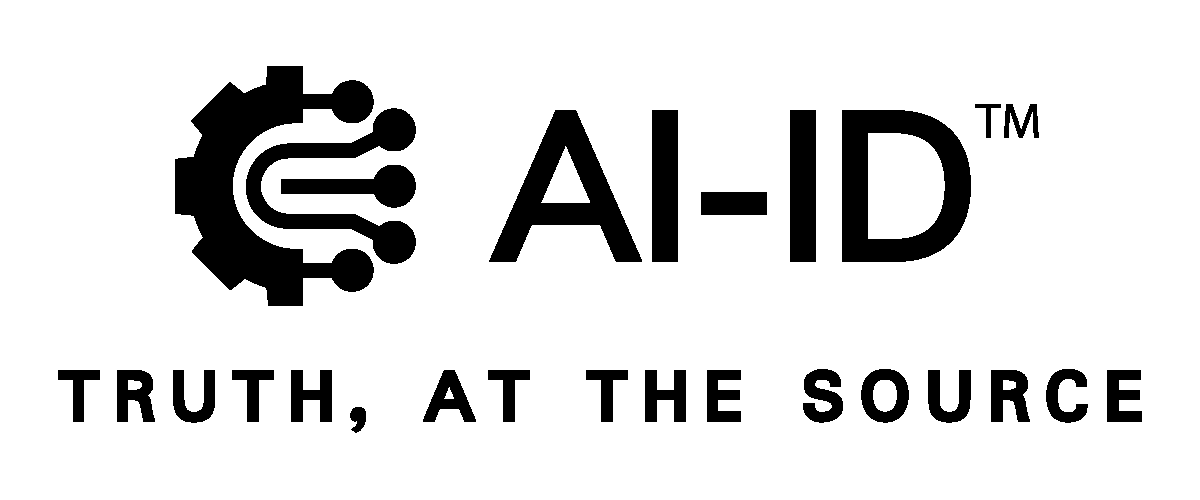On the face of it, the question “What is a bank?” was once a simple one to answer.
Banks are the places you go to park your money. To take out your money. To stand in line after parking your car and maybe talk to someone about a mortgage. The bank is, then, a part of the daily or weekly errands.
In decades past, the above held true. But in the 21st century, the question is a bit harder to answer, given that consumers spend so much time online, the banks themselves have apps, and now, in the post-pandemic world, a premium is placed on a seamless customer journey.
In a round of interviews housed within the “What’s Next in Payments” series, 14 executives offered insights and observations about the changing, fluid nature of financial services, where the only constant is evolution, and where competition for share of wallets and consumer loyalty has been fierce.
Banks Must Give Customers the Access They Want
 “The pandemic was the final nail in the coffin of consumers not being forced to go where their bank is, and instead have the bank come to them,” Michael Haney, head of product strategy at Galileo Financial Technologies, told PYMNTS.
“The pandemic was the final nail in the coffin of consumers not being forced to go where their bank is, and instead have the bank come to them,” Michael Haney, head of product strategy at Galileo Financial Technologies, told PYMNTS.
 Splitit CEO Nandan Sheth said: “The number of branches may decline, but the specialization of the branch, and the purpose, mission and vision of the branch, is going to change.”
Splitit CEO Nandan Sheth said: “The number of branches may decline, but the specialization of the branch, and the purpose, mission and vision of the branch, is going to change.”
 Ingo Payments CEO Drew Edwards told PYMNTS’ Karen Webster that consumers nowadays keep money spread across several accounts and segment, or silo, those accounts for different use cases. There’s a greater need to enable money mobility so that funds can flow easily in and out of those accounts as the holder desires.
Ingo Payments CEO Drew Edwards told PYMNTS’ Karen Webster that consumers nowadays keep money spread across several accounts and segment, or silo, those accounts for different use cases. There’s a greater need to enable money mobility so that funds can flow easily in and out of those accounts as the holder desires.
 Jim McCarthy, CEO of Thredd, said banks have to break down their walled gardens to give customers what they truly want.
Jim McCarthy, CEO of Thredd, said banks have to break down their walled gardens to give customers what they truly want.
The institutions must play some catch-up, as they’re competing with Apple Pay circa 10 years ago, when the world is moving on to directory services, risk and authentication. What banking clients are looking for is a continuum of financial services, with payments at the center of it all, he said.
Going Digital and Moving Beyond ‘Banker’s Hours’
Technology — no surprise — has shaken things up a bit.
 “Ninety percent of what I want to do at a bank I can now do at my kitchen table,” Bryan Lewis, CEO at Intellicheck, told PYMNTS Webster for the series.
“Ninety percent of what I want to do at a bank I can now do at my kitchen table,” Bryan Lewis, CEO at Intellicheck, told PYMNTS Webster for the series.
“It’s convenience,” he added. “That’s why you see a much higher use of digital for banking.”
 In a separate interview, Shaunt Sarkissian, founder and CEO of AI-ID, told PYMNTS: “Banks still play the role they’ve always played, but as we become digital, as we become mobile and as the banks become branchless, the relationship becomes centered in the technology and the capabilities — not always the individuals, the bankers that knew you.”
In a separate interview, Shaunt Sarkissian, founder and CEO of AI-ID, told PYMNTS: “Banks still play the role they’ve always played, but as we become digital, as we become mobile and as the banks become branchless, the relationship becomes centered in the technology and the capabilities — not always the individuals, the bankers that knew you.”
Apps have enabled anywhere, anytime banking — from checking balances to making payments with just a few taps on a screen.
 But going digital is not enough. Priority Technology Holdings CEO Tom Priore said banks must fine-tune their offerings. In the current environment, consumers and businesses want to get paid faster, they want access to working capital — and so they’re turning to providers like Chime and SoFi to get what they want. Banks are still not prepared to deliver these innovations. Many banking executives are still struggling with the limitations of legacy architectures and technologies.
But going digital is not enough. Priority Technology Holdings CEO Tom Priore said banks must fine-tune their offerings. In the current environment, consumers and businesses want to get paid faster, they want access to working capital — and so they’re turning to providers like Chime and SoFi to get what they want. Banks are still not prepared to deliver these innovations. Many banking executives are still struggling with the limitations of legacy architectures and technologies.
 “Banks are starting to realize the speed at which technology has changed the world,” James Butland, vice president of payments and U.K. managing director at Mangopay, told PYMNTS in his own comments on the shifting trends.
“Banks are starting to realize the speed at which technology has changed the world,” James Butland, vice president of payments and U.K. managing director at Mangopay, told PYMNTS in his own comments on the shifting trends.
“The challenge that a traditional bank has is that they sit on 150, 200 years of legacy infrastructure and probably 60 years of legacy technology,” he added. “So, banks have found it difficult to innovate quickly.”
They can sidestep some of those challenges, said Priore, as partnerships with FinTechs become especially valuable given the fact that some revenue streams, such as credit card late fees and overdraft fees, are being capped.
Still Maintaining the Branch
 None of this is to say that banks would be wise to pivot toward branchless models or to engage with consumers solely through mobile means. Dave Scola, CEO, U.S., Form3, said banks still add value in the branch setting.
None of this is to say that banks would be wise to pivot toward branchless models or to engage with consumers solely through mobile means. Dave Scola, CEO, U.S., Form3, said banks still add value in the branch setting.
“Banks are loath to give this up — and understandably so,” he said, adding: “They will want to preserve this as much as they can going forward.”
 NCR Voyix President Doug Brown echoed those sentiments, telling Webster: “Optionality is the key here. Having that optionality is the full spectrum that needs to be present in relationship banking. … There’s less reliance on the physical footprint, but there’s not a total abandonment of the footprint.”
NCR Voyix President Doug Brown echoed those sentiments, telling Webster: “Optionality is the key here. Having that optionality is the full spectrum that needs to be present in relationship banking. … There’s less reliance on the physical footprint, but there’s not a total abandonment of the footprint.”
As for the in-branch interactions, consumers now expect their FIs to know who’s coming into the branch and to have everything on hand that they need to make the visit efficient and effective. Personalization is paramount.
 Rich Clow, managing director, head of innovation and strategy, Global Payments Solutions, Bank of America, told PYMNTS that omnichannel demands are pointing banks toward a seamless continuum of digital and brick-and-mortar services. Banks are finding, and will continue to find, value in using financial centers to exist as key settings for clients to visit if they need to speak to financial services experts or get advice.
Rich Clow, managing director, head of innovation and strategy, Global Payments Solutions, Bank of America, told PYMNTS that omnichannel demands are pointing banks toward a seamless continuum of digital and brick-and-mortar services. Banks are finding, and will continue to find, value in using financial centers to exist as key settings for clients to visit if they need to speak to financial services experts or get advice.
“But these are not the same branches that your parents went to,” he said.
 Vish Shastry, chief product officer at Banyan, said consumers are finding that the ease of interactions across retail and groceries (online and offline) and various digital platforms are changing the expectations of what banking is — and innovation will remain critical.
Vish Shastry, chief product officer at Banyan, said consumers are finding that the ease of interactions across retail and groceries (online and offline) and various digital platforms are changing the expectations of what banking is — and innovation will remain critical.
Shastry pointed out that FinTech platforms like Robinhood, Cash App and Venmo have disrupted the status quo, compelling banks to reimagine their offerings continually and challenging traditional players to keep pace with evolving consumer preferences.
At a foundational level, banks now have the information they need to drive the right recommendation to the right person at the right time.
 Eric Foust, vice president of banking partnerships, North America, Trustly, said that in the wake of the pandemic, consumers are looking to banks to deliver the same ease of use and personalization that has been a hallmark of eCommerce. The infrastructure is now in place.
Eric Foust, vice president of banking partnerships, North America, Trustly, said that in the wake of the pandemic, consumers are looking to banks to deliver the same ease of use and personalization that has been a hallmark of eCommerce. The infrastructure is now in place.
“We have new payment rails, like RTP and FedNow that don’t go to sleep … during bank holidays or on the weekend,” Foust said.
Open Banking and AI Will Deliver Personalization
The continued rise of open banking, especially in the United States will help meet the new consumer expectations of a speedy, personalized experience, said the executives PYMNTS surveyed.
 Jacqueline White, president at i2c,, said Europe has led the way in showing how banks and FinTechs can collaborate to forge innovations with consumer-permissioned data. New regulations on data privacy and sharing will ensure that traditional financial institutions and digital-only upstarts work well together within the confines of evolving frameworks.
Jacqueline White, president at i2c,, said Europe has led the way in showing how banks and FinTechs can collaborate to forge innovations with consumer-permissioned data. New regulations on data privacy and sharing will ensure that traditional financial institutions and digital-only upstarts work well together within the confines of evolving frameworks.
 “The pandemic was the final nail in the coffin of consumers not being forced to go where their bank is, and instead have the bank
“The pandemic was the final nail in the coffin of consumers not being forced to go where their bank is, and instead have the bank 


 “Ninety percent of what I want to do at a bank I can now do at my kitchen table,”
“Ninety percent of what I want to do at a bank I can now do at my kitchen table,”  In a separate interview,
In a separate interview,  But going digital is not enough.
But going digital is not enough.  “Banks are starting to realize the speed at which
“Banks are starting to realize the speed at which  None of this is to say that banks would be wise to pivot toward branchless models or to engage with consumers solely through mobile means.
None of this is to say that banks would be wise to pivot toward branchless models or to engage with consumers solely through mobile means. 



